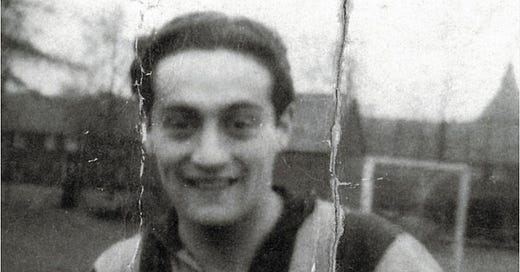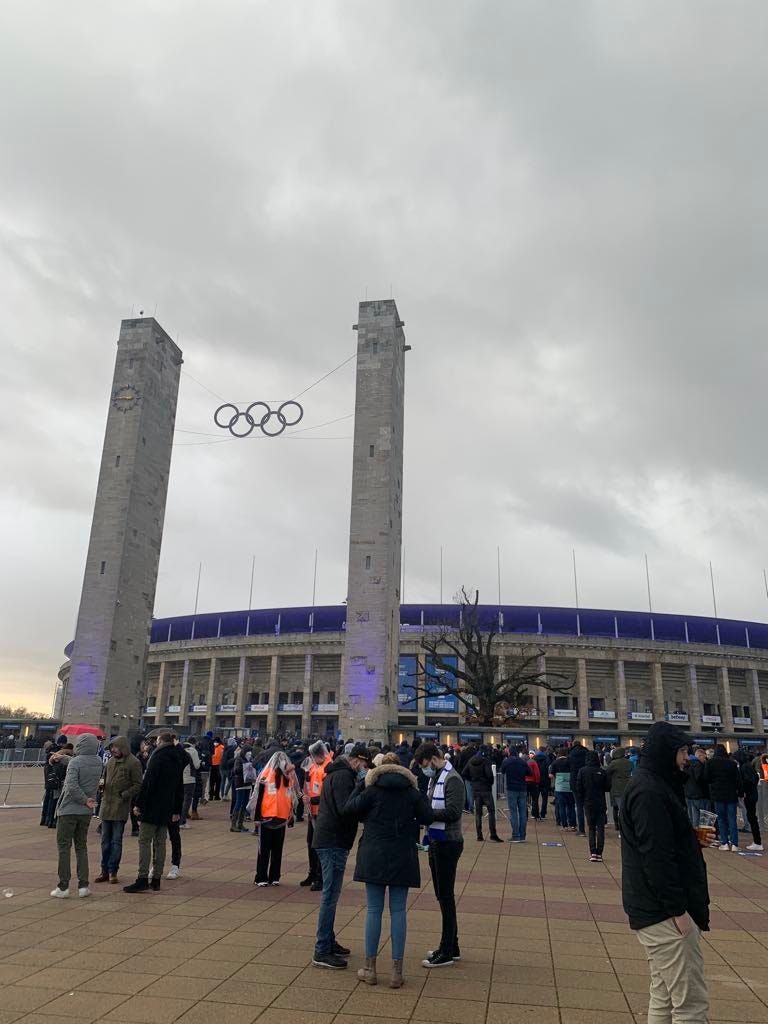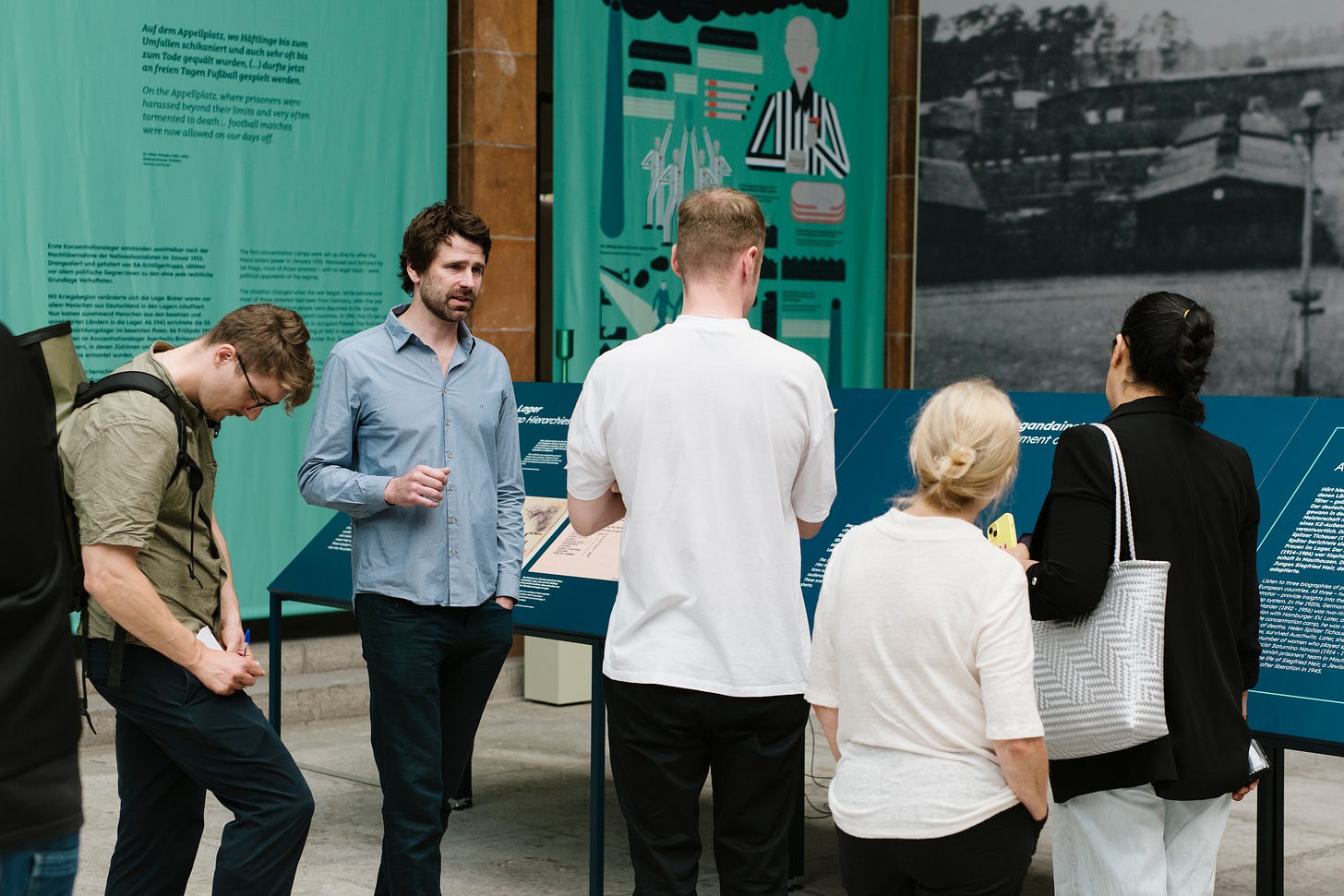Remembering Football in the Third Reich
We speak to two historians about their work in uncovering football’s history during Germany’s darkest period
After a relaxing Christmas break, the Bundesletter is back.
This year, I’m aiming to stick to a more routine schedule. The goal is to publish an article a week, with the usual additional content for paid subs.
I’ve sat on this story for a while. It hasn’t been an easy one to write, for obvious reasons. As we seemingly slip into a world where the truth is harder to pin down, where freedoms are under threat and the creeping tide of fascism continues to accelerate, it seems important to get this up (important to me at least).
It’s a beautiful summer’s day in Berlin.
The walkways from the S-Bahn station to the Olympiastadion are awash with orange, red and white. Austria and the Netherlands are facing off in their final group game of Euro 2024. Fans from both countries, and a fair few neutrals donning their nation’s colours, are meeting with friends, having a chat, sharing a beer.
I’m attending the game with a few pals. As we approach the snaking security queue, my mate Seàn and I start talking about the stadium. “They loved a column didn’t they?” I say off-handedly.
It’s a flippant way of remembering the origins of this sporting cauldron. Built for the 1936 Berlin Olympics, the stadium has stood largely untouched since its construction in the buildup to those games. With a neo-classical facade and austere grey concrete it is unmistakably Nazi in its design. Sitting on the site of the stadium designed by his father Otto for the cancelled games of 1916, Werner March’s colosseum is one of the most famous remnants of the Third Reich’s architectural style.
This monolith acts a microcosm for the German culture of remembrance. Debates around extensive renovation or reconstruction have been stymied by a protection order, and the local government commissioned the creation of a history trail with 46 information boards to put the building into some historical context. Features such as the Marathon Gate are now iconic, while Hitler’s balcony has become part of the VIP section. Despite this many are still unaware of the building’s place in history.
“On the second day of our exhibition, a woman said to me, ‘This is a brilliant exhibition, we had no idea the stadium was built by the Nazis,” says Julian Rieck, a historian with a political scientist, historian, and ethnologist who researches and writes about the political history of football. “I said ‘Okay, but do you go to the stadium sometimes?” Her family has a season ticket at Hertha.”
Rieck is referring to an exhibition called ‘Sports. Crowds. Power.’ that he curated alongside researcher Yvonne Zindel and his colleagues at What Matters, an organisation that seeks to develop projects that address antisemitism, racism and other forms of discrimination. In the Summer of 2024, the project invited football fans to learn how the regime used sport as a means of control, while also highlighting the atrocities committed against Jewish footballers. The display was situated in the Haus des Deutschen Sports (The house of German Sports) within the Olympiapark. Originally a venue in the 1936 games, and subsequently used as a base by the British Army, it is now used as an administrative office for the management of sport in Berlin. “It is an authentic place of sports history,” Rieck explains.
Other historic institutions used the sudden influx of football fans to focus on the use of sport in the Nazi regime too. In the Summer of 2024, The Buchenwald Memorial, situated in the concentration camp of the same name in the Eastern city of Weimar, presented an online and in-person exhibit which highlighted both the suffering of former footballers in the camp, the playing of the sport in the camp, and the team started by the SS guards.
“The European Championship was one of the topics of the summer,” says the exhibit’s curator Michael Löffelsender. “Football was omnipresent in the media and in public perception.
“We broke new ground in terms of content by asking about and looking for the connections between football and the history of the Buchenwald concentration camp for the first time.
We also wanted to attract new target groups to visit the memorial and to engage with the history of the Buchenwald concentration camp.
“We wanted to use the topic of football to appeal to people who were interested in football but not so much in the history of Buchenwald. The topic of football was a bridge, so to speak, to bring people closer to the history of Buchenwald and, in a second step, to engage more deeply with it.”
Rieck explains the exhibit in Berlin had similar goals, hoping to attract fans attending games at the tournament. While logistics meant the exhibit had to close on gamedays, several thousand people attended, with groups from local schools making regular visits. Over 150 schools, with children of all ages, visited during the four months of the display.
Both historians describe similar goals in the construction of their exhibitions. One, to highlight the suffering of the footballers under the oppression of the Nazi regime. Two, to demonstrate how sport was used as a means of soft power and control. Three, to highlight the complicity of certain groups within football in furthering the cause of the Third Reich, and demonstrating how racism and discrimination continues to blight German football and wider society.
Löffelsender’s research details the many talented footballers that ended up in Buchenwald. There’s first-hand accounts from a young Dutch man called Louis de Wijze. Originally born in Boxmeer near the German border in 1922, he began playing the sport at the age of 14. Called up to the Dutch Army after the German invasion of Poland in 1939, he was barred from playing for his club Quick 1888 in 1941 following the German invasion of the Netherlands. As a Jewish man, he and the rest of his family were arrested in 1942, taken to a transit camp in Westerbork before being deported to Auschwitz in 1944. Here, he played football as one of a few privileged prisoners that were allowed to take apart. Eventually, he was transported to Buchenwald in 1945, before escaping a death march in April 1945. After his return to the Netherlands, he remained involved in remembrance work until his death in 2009.
“So far, we have been unable to find accounts in which inmates who played at Buchenwald gave first-hand accounts of their experience,” Löffelsender explains.
“Louis de Wijze, who came to Buchenwald from Auschwitz at the beginning of 1945, later wrote about playing football in Auschwitz. He was part of a Jewish football team there and later reported that playing football was like a brief escape from the murderous camp routine for him. It was the 90 minutes that didn't involve beatings, the gallows or violence. In the few moments when they played football, the prisoners felt like people again, not just numbers; they could feel themselves again.”
Löffelsender also highlights the story of the Austrian Karl Glotzmann. An up-and-coming striker in Vienna in the early 1930s, his career in Czechoslovakia and France was stymied not only by repeated injuries, but also habitual run-ins with the law.
“He seems to have been quite well known in Vienna at the time - because of his skills as a footballer and his numerous convictions,” Löffelsender explains.
“He provided material for numerous headlines. As a so-called ‘professional criminal’, Karl Glotzmann was sent to Buchenwald concentration camp in 1940. He remained there until the beginning of 1945, when he volunteered to serve on the front, where he finally died shortly before the end of the war.
“He was remembered by many Austrian Buchenwald survivors after the war because, as a prisoner functionary, he saved the lives of some of his fellow inmates in Buchenwald. However, I find his biography remarkable not only because he was a so-called ‘professional criminal’ and therefore belonged to a group of victims who were hardly ever talked about, or only in a very one-dimensional and negative way, until the recent past.”

Sports. Crowds. Power. highlighted the cause of the individual, but also looked at the collective plights of clubs. When the Nazis took power in 1933, most clubs were forced to disband, expel their Jewish members, and reform. This was particularly the case for teams based around a shared identity which didn’t fit the Aryan model. Teams based around Catholicism, or worker’s unity were also persecuted. To demonstrate this, the shirts of 11 such clubs were presented, with context on the persecution they faced.
“Hakoah Wien are a good example,” says Rieck. The club was forced to disband after the annexation of Austria in 1938. “They were a Jewish team, based in Vienna, which won the first Austrian professional league. They travelled around the world. That makes them a symbol. You can resist anti-semitism when you stick together. When you build a team, you can be successful, you can debunk the myth of not being physically strong enough.”
Rieck explains this symbolism was the only value Nazis actually put in sport. He cites the 1936 Olympics, and the friendly played between England and Germany at White Hart Lane in 1935 were used as tools of propaganda, both to show Aryan dominance but also acceptance by the wider international community.
“They understood the power of the stadium. A place where every week you could broadcast the national anthem and report people showing the Nazi salute. They were not stupid. They knew that the masses were important, they knew the importance of the crowds.”

The sports field at Buchenwald was one of the few areas of the camp made accessible to visitors. In August 1940 a delegation from the Red Cross was shown this area by the SS. Löffelsender says “it can be assumed the SS only showed the visitors the places that were intended to convey a positive image of the camp and its living conditions.
“In this respect, the sports field was used as a propaganda tool to convey a certain image. Whether this was the only reason the SS allowed prisoners to engage in such leisure activities cannot be answered conclusively.”
The influence of this cultural persuasion is still felt keenly in football today. Rieck’s exhibition showed the violence of Neo Nazis in German football during the 1980s and 90s, including the brutal attack carried out by hooligans on French policeman Daniel Nivel at the 1998 World Cup. He explains that What Matters is constantly engaging with football clubs to foster an atmosphere of inclusivity, to quell the fires of discriminatory behaviours on the collective rather than attempt to reach the bigoted few.
“We don’t try to convince Neo-Nazis not to be Neo-Nazi. You cannot control the one man that is shouting something racist, but you can influence the collective. We want to reach the people who will stand up against it.”








Hi Tom,
i enjoyed the histoty lesson -takes me back to the seventys when I was a teen and the
Gernan 1st & 2nd World Wars were the main stayes of the sylybus.
Great effort was made to teach the inter-war politial changes and causes for
the establishment the Nazies and post 2nd reperations (of course reperations
werer imposed after the 1st WW -posible reason for the rise of the scum right) .
Send my love to Nessa and a big sticky kiss to you.